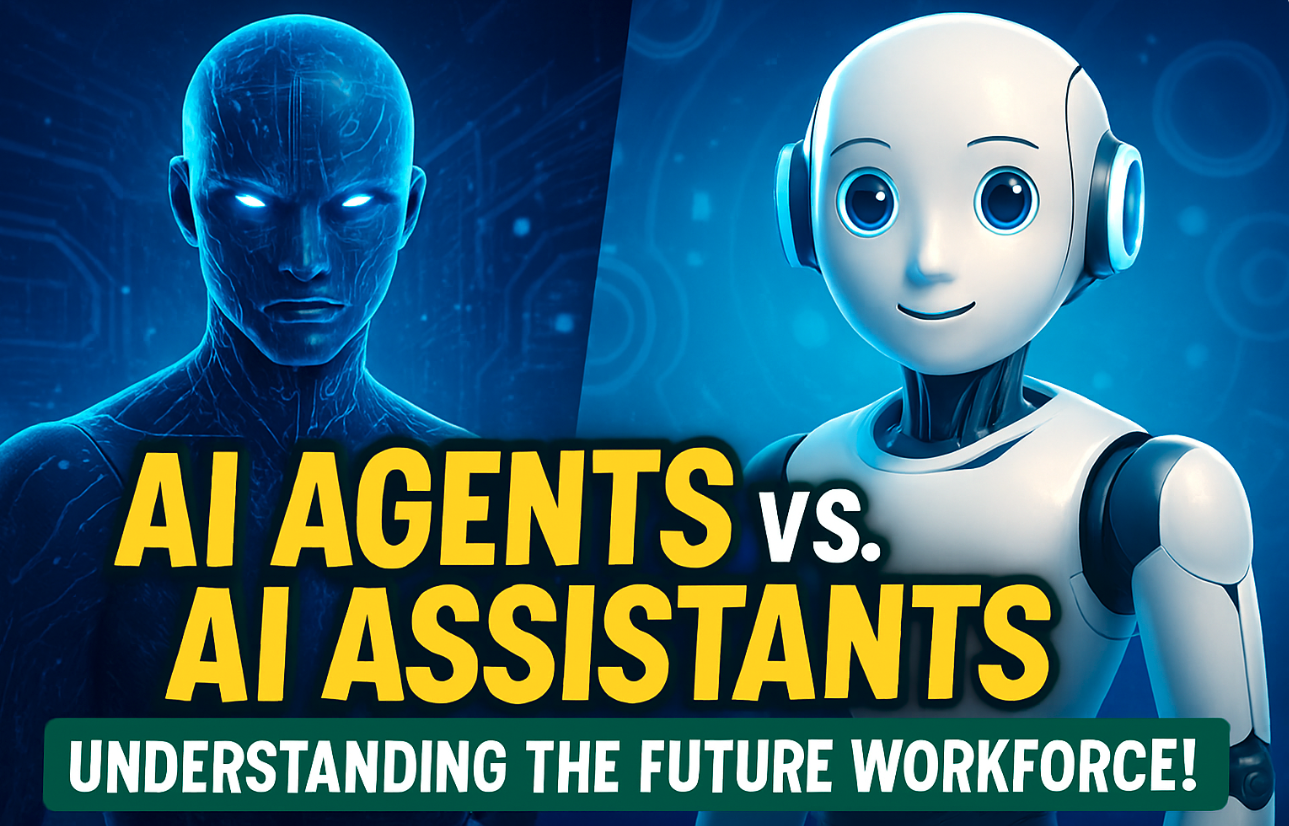AI Agents vs. AI Assistants: Understanding the Future Workforce
In the rapidly evolving landscape of artificial intelligence, terms like "AI assistant" and "AI agent" are often used interchangeably, adding to the confusion about what AI can do for us. While both are powered by sophisticated AI technologies, they represent distinct levels of autonomy and capability. Understanding the difference is crucial as businesses and individuals increasingly interact with intelligent systems.
Drawing inspiration from insights shared by companies at the forefront of AI development, like IBM, we can clarify these roles. It's not just about semantics; it's about recognising the different ways AI is being deployed to augment human effort and automate complex processes.
So, what truly separates an AI assistant from a more advanced AI agent? It boils down to a fundamental difference in their mode of operation: Assistants are reactive; Agents are proactive and autonomous.
The AI Assistant: Your Knowledgeable Co-Pilot
Think of an AI assistant as a highly intelligent, responsive co-pilot designed to help you with specific tasks when prompted. Leveraging technologies like natural language processing (NLP) and machine learning, assistants excel at understanding your requests and providing information or taking predefined actions.
Key characteristics of AI Assistants typically include:
Reactive Operation: They wait for your command or query before taking action.
Conversational Interface: They are designed for natural, often human-like interaction through text or voice.
Task-Oriented (Defined Scope): They are typically built to handle a range of specific, often routine tasks (setting reminders, answering FAQs, providing summaries, basic data retrieval).
User-Focused: Their primary goal is to enhance user experience and provide quick, accessible help.
Limited Autonomy: While they can perform tasks, they generally operate within a defined framework and require explicit instructions for each action or sequence.
Popular examples we encounter daily include virtual assistants on our smartphones, chatbots on websites, or AI features embedded within software that help with tasks like writing emails or generating basic reports when asked. They make information more accessible and automate simple, repetitive actions based on direct user input.
The AI Agent: The Autonomous Problem Solver
AI agents, on the other hand, represent a significant leap in AI capability and autonomy. Inspired by concepts from cognitive science and computer science, agents are designed to act independently to achieve a broader goal, often without step-by-step human guidance after the initial objective is set.
Drawing from descriptions often highlighted in industry discussions, including those from IBM, AI Agents are characterised by:
Proactive and Autonomous Operation: They can initiate actions and develop their own plans to achieve a defined goal.
Goal-Oriented (Complex Objectives): They are tasked with achieving more complex objectives that may involve multiple steps, decision points, and interactions with various systems.
Environmental Interaction: They can perceive their environment (digital or potentially physical), process information from diverse sources (databases, APIs, the web), and interact with external tools and systems autonomously.
Decision-Making and Reasoning: Agents possess a higher level of reasoning ability, allowing them to analyze situations, make independent decisions, and adapt their approach based on new information or outcomes.
Persistent Memory and Learning: Many advanced agents maintain a form of persistent memory, learning from past experiences and refining their strategies over time to become more effective.
Task Chaining and Workflow Creation: They can break down complex goals into smaller sub-tasks, determine the logical sequence of operations, and execute entire workflows independently.
Examples of AI agents, though often less visible to the average consumer than assistants, are emerging in areas like automated financial trading, supply chain optimisation, complex IT support systems that can diagnose and fix issues, or even the "virtual employees" discussed in the context of future corporate environments. They are built for complexity, efficiency, and autonomous problem-solving in dynamic environments.
The Synergy: Assistants and Agents Working Together
It's important to note that AI assistants and agents are not mutually exclusive; they can be complementary. An AI assistant might be the user-facing interface through which a human interacts with a network of more specialised AI agents operating in the background to fulfil a complex request. For instance, you might ask an AI assistant to "Plan my business trip to London next month," and behind the scenes, a series of AI agents could autonomously check your calendar, find flights and hotels within budget, book reservations, and even generate a draft itinerary – reporting back the completed plan through the assistant interface.
Why Understanding the Difference Matters
As AI becomes more integrated into our professional and personal lives, recognising the distinction between assistants and agents is crucial for several reasons:
Setting Realistic Expectations: Knowing the capabilities of a system helps users understand what to ask it to do and what level of autonomy or human oversight is required.
Identifying the Right Tool for the Job: Businesses need to understand whether a task requires a reactive assistant for user interaction or a proactive agent for autonomous process automation.
Addressing Security and Governance: The higher autonomy of AI agents introduces more complex questions around security, accountability, and control compared to the more constrained nature of assistants.
Preparing for the Future of Work: As AI agents become more sophisticated, they will take on increasingly complex tasks, redefining job roles and requiring humans to focus on higher-level strategic and creative work.
Drawing from perspectives across the industry, the evolution from AI assistants to AI agents marks a significant step in AI's capability to act independently and solve problems in the real world. While assistants empower users with accessible information and automated tasks, agents promise to automate entire processes and workflows, operating as autonomous digital colleagues.
The age of intelligent automation is here, and understanding the players – both the helpful assistants and the powerful, proactive agents – is key to navigating the future effectively.
